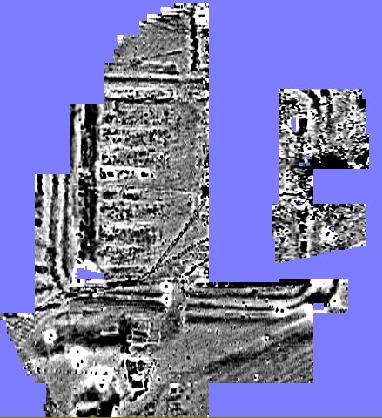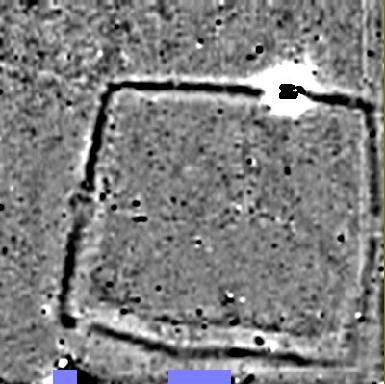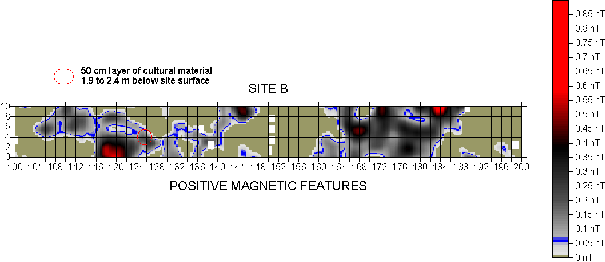|
FM256 Application Examples - Page 1 Page 2
Double Speed surveys giving high quality data and fast coverage
Example 1: Roman Fort
A dual FM256 fluxgate gradiometer was used to survey a large area of 3.1 hectares at a Roman Fort in Cumbria. Data was collected on two separate occasions. During 2002 an FM36 acted as slave and the main area of the fort was surveyed, whilst in 2004 an FM256 acted as slave and the area to the south and west of the fort was surveyed. The survey comprised 78 x 20m x 20m grids. Data collection speed was 0.7s/m, sampling at 4 readings/m, with a traverse interval of 1m, and data was subsequently interpolated to 0.25m.
The survey clearly shows the outline of the Roman fort and a considerable wealth of features are visible including rampart, outer ditches, and internal buildings or barracks. There is good evidence for an entrance or gatehouse to the south. Of particular note is the clear negative response due to further stone buildings to the south of the fort, possibly a bathhouse complex. The eastern area is heavily disturbed by a Victorian cemetery, visible as a noisy response in the plot. The southern part of the survey was made in extremely windy and gusty conditions but despite this it was still possible to obtain excellent results because of the low profile of a 0.5m gradiometer and excellent stability and rigidity of the CF6 frame mounting system.
|
|






